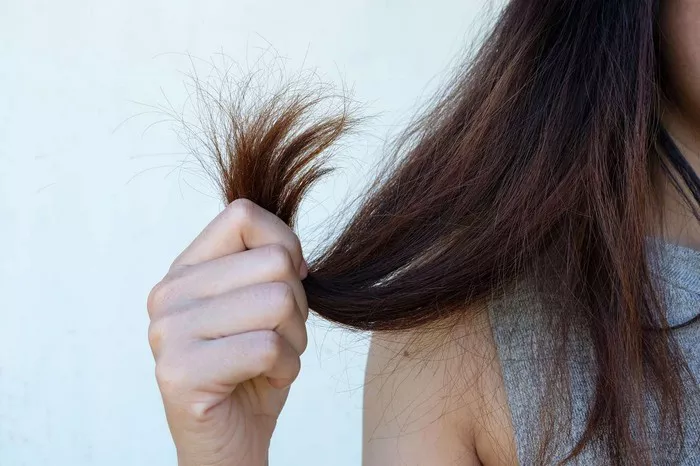Hair has always played a significant role in our appearance, impacting how we perceive ourselves and how others perceive us. One common question that arises in hair care and styling discussions is whether longer hair makes hair appear thinner. This article delves into the science behind hair thickness, the effects of hair length, and practical styling tips to achieve the look you desire.
Understanding Hair Structure
The Anatomy of Hair
To comprehend how hair length affects its appearance, it’s essential to understand the basic structure of hair.
Hair Follicle: Each strand of hair grows from a follicle located in the skin. The number of hair follicles a person has is largely determined by genetics.
Hair Shaft: The visible part of the hair, known as the hair shaft, consists of three layers: the cuticle (outer layer), the cortex (middle layer), and the medulla (inner layer). The thickness of the hair shaft varies from person to person.
Hair Density: Hair density refers to the number of hair follicles on the scalp. A person with high-density hair has more hair follicles per square inch, giving the appearance of fuller hair.
Factors Affecting Hair Thickness
Several factors influence the perceived thickness of hair, including:
Genetics: Family history plays a significant role in determining hair thickness and density.
Age: As people age, hair often becomes finer and may thin out.
Health and Nutrition: A balanced diet rich in vitamins and minerals promotes healthy hair growth. Nutritional deficiencies can lead to hair thinning.
See Also: Does Long Hair Make You Look Older? Debunking the Myths
The Relationship Between Hair Length and Perceived Thickness
Long Hair vs. Short Hair: The Illusion of Thickness
While longer hair does not inherently make hair thinner, it can create an illusion that may lead to the perception of decreased thickness.
Weight of Long Hair: Longer hair is heavier than shorter hair, which can lead to the hair being pulled down. This weight can create a flatter appearance, particularly if the hair is fine or lacks volume.
Layering and Movement: Long hair styled without layers can appear heavy and lifeless, emphasizing the length over the thickness. In contrast, shorter hair tends to have more volume and body, which can make it appear thicker.
Visual Perception of Length
Long hair can elongate the overall silhouette, drawing attention to the length rather than the thickness. This elongation can lead to the illusion of thinner hair, especially if the hair is fine or lacks volume.
Factors That Influence the Appearance of Thickness
Hair Color and Highlights
The color of your hair plays a significant role in how thick it appears.
Dark vs. Light Colors: Darker hair can create a denser look, while lighter shades can sometimes give the illusion of less fullness.
Highlights and Dimension: Adding highlights or lowlights can create depth and dimension, making hair appear fuller regardless of length.
Hair Texture
The natural texture of your hair can significantly impact how thickness is perceived.
Straight vs. Curly: Straight hair may lie flatter against the scalp, giving the appearance of thinner hair. In contrast, curly or wavy hair tends to have more volume and movement, making it appear thicker.
Fine vs. Thick Hair: Fine hair, regardless of length, often appears thinner due to its smaller diameter. In contrast, thick hair typically maintains its volume even at longer lengths.
Styling Tips for Achieving a Fuller Look
Layering Techniques
Incorporating layers into your hairstyle can significantly enhance the perception of thickness.
Face-Framing Layers: These can add movement and shape, preventing hair from looking flat and heavy.
Long Layers: Adding long layers to long hair can create texture and body without sacrificing length.
Volume-Enhancing Products
Utilizing the right products can make a substantial difference in achieving a fuller look.
Volumizing Mousse: Apply volumizing mousse to damp hair before blow-drying to create lift and fullness.
Texturizing Spray: A texturizing spray can add grip and texture, giving the appearance of thicker hair.
Styling Techniques
Certain styling techniques can enhance the appearance of thickness.
Blow-Drying: Blow-drying your hair upside down can add volume and lift at the roots.
Curling: Soft curls can create movement and volume, making hair appear thicker.
Regular Trims
Regular trims help maintain the health of your hair and prevent split ends, which can make hair appear thinner. Healthy hair reflects light better and looks fuller.
The Impact of Hair Health on Thickness
Nutritional Support for Healthy Hair
Maintaining a balanced diet rich in vitamins and minerals is crucial for healthy hair growth.
Protein: Hair is primarily made of protein, so adequate protein intake is essential for hair health.
Vitamins and Minerals: Vitamins A, C, D, E, zinc, and omega-3 fatty acids contribute to healthy hair.
Avoiding Damage
Heat styling, chemical treatments, and environmental factors can damage hair, leading to thinning.
Heat Protection: Use heat protectants when styling with heat tools to minimize damage.
Gentle Hair Care: Opt for sulfate-free shampoos and moisturizing conditioners to maintain hair health.
Conclusion
Long hair does not inherently make hair look thinner. Instead, the perception of thickness is influenced by various factors, including hair health, color, texture, and styling techniques. By understanding how these elements interact, you can make informed choices about your hairstyle to enhance the appearance of thickness.
Ultimately, the key to achieving fuller-looking hair lies in proper care, styling, and confidence in your unique beauty. Embrace your hair, whether long or short, and use these insights to create a look that reflects your personality and style.
You Might Be Interested In
- Does Your Hair Grow Quicker if You Cut It? Uncover the truth
- Does Cutting Hair Short Make It Grow Thicker? Learn the truth
- Does Hair Growth Stop at a Certain Age? Debunking Myths


